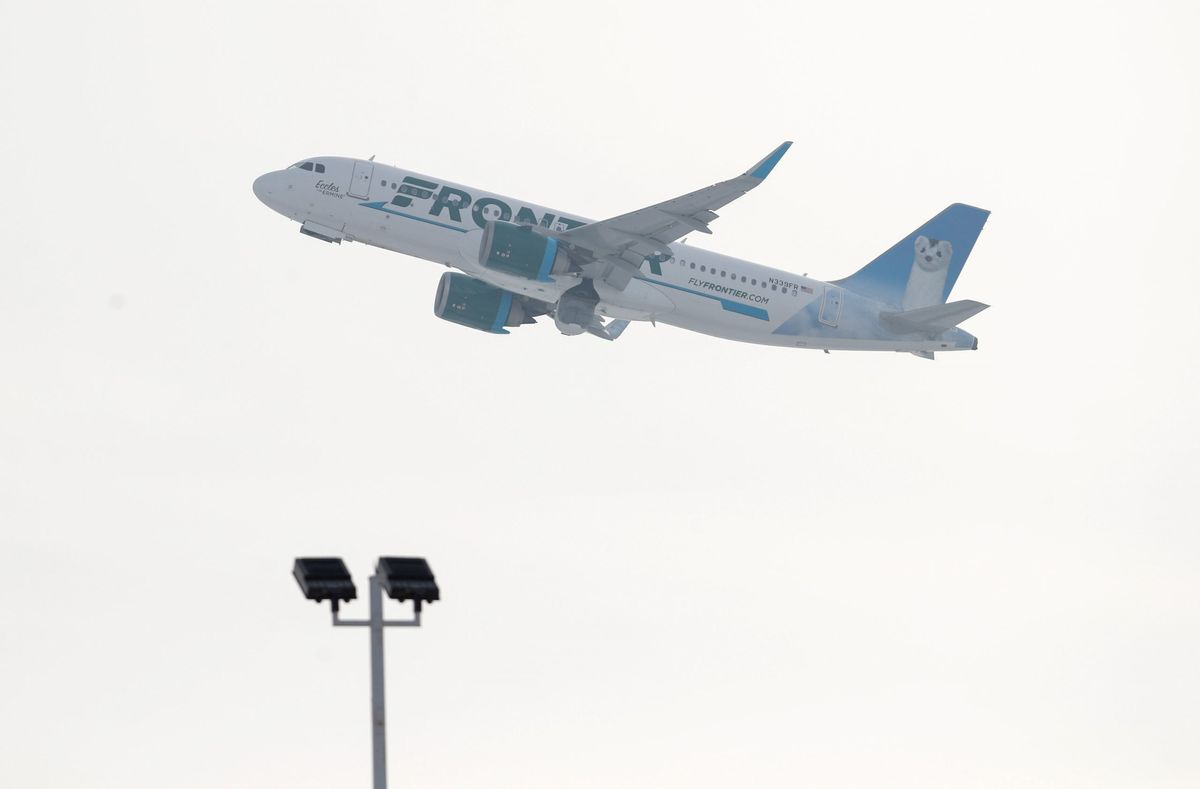Frontier Airlines refiles for IPO as travel industry begins to rebound

A few minutes every morning is all you need.
Stay up to date on the world's Headlines and Human Stories. It's fun, it's factual, it's fluff-free.
Frontier saw a net US$225 million loss in 2020, compared to a net income of US$251 million in 2019, mimicking the massive losses other competitors also saw throughout the year.
Last Monday, Frontier Airlines filed for an initial public offering (IPO) for its second time, indicating a level of renewed confidence in the travel industry after being one of the industries hit hardest by the pandemic. Frontier first filed for an IPO in 2017, but withdrew its application last summer.
Frontier saw a net US$225 million loss in 2020, compared to a net income of US$251 million in 2019, mimicking the massive losses other competitors also saw throughout the year.
Budget airlines like Frontier have been the most optimistic about a rebounding travel industry in 2021. Another discount carrier, Spirit Airlines, has announced that it plans to begin training new pilots and flight attendants for the first time since the pandemic began.
These kinds of low-cost airlines tend to focus on domestic leisure travel and have performed better than international and business travel over the course of the pandemic, perhaps giving them more room to take a leap of faith in a recovering economy.
Pandemic impact
The COVID-19 pandemic hit the airline and travel industry hard. At its lowest point shortly after the start of the pandemic in 2020, there were 96% less passengers on airplanes year over year compared to 2019, according to Transportation Security Administration (TSA) checkpoint travel numbers. Even at its 2020 high point, in the final week of December, there were fewer than half the number of travelers compared to the previous year.
Airlines saw a cumulative total loss of around US$35 billion in 2020, with most of them seeing massive drops in stock prices. United Airlines’ share price fell by more than half over the course of the year, its biggest drop in over a decade, with the stock price of American Airlines falling 45%.
While airlines have seen improvement in recent months, associations representing major airlines in the United States say that they are losing a collective US$150 million a day.
Stimulus relief
Federal stimulus packages – of which there have been three – have largely kept airlines intact as well as the 10 million workers the industry employs in the US.
Under the first stimulus last March, airlines were provided with US$25 billion in federal loans and another US$25 billion in payroll grants to prevent layoffs. The second stimulus in December renewed payroll funding by injecting an additional US$15 billion, with the third stimulus that was signed into law last week granting another US$14 billion for payroll funding and US$9 billion more for airports and related businesses to implement COVID-19 safety procedures and operate normally.
With the most recent stimulus package, entitled The American Rescue Plan Act, American Airlines and United Airlines were able to tell 27,000 of their employees who had received layoff notices that they could ignore them. The furloughs were expected to come as federal aid expired, but the aid was extended with the new package. The most recent stimulus guarantees assistance through September of 2021.
“If you have one of those WARN Act notices we sent out in February, tear it up,” said American Airlines’ Chief Executive Officer Doug Parker said in an Instagram video, referring to the legally required furlough notification that the airline had sent out in preparation for the layoffs. “There aren’t going to be any furloughs at American Airlines in April and, with vaccinations on the rise, hopefully never again.”
Building back
As vaccinations go into arms throughout the country and infection rates dip significantly from the peaks they reached in the first weeks of the year, the airline industry is beginning to position itself for a recovery.
In addition to the optimistic actions of budget airlines like Frontier and Spirit, major international airlines like United have signaled their confidence by purchasing 25 additional Boeing 737 Max airplanes. The purchase is not only a strong vote of faith in the industry, but also one of faith in the plane itself which was grounded for 20 months following two crashes. The plane was cleared to fly again by the Federal Aviation Commission (FAA) last November.
Delta mirrored this positive sentiment, saying that it wants all of its 1,700 pilots who have not been flying to be back on active status by October. Delta’s president had indicated that they were seeing a meaningful increase in demand for travel both in the near future and during the summer.
Though airlines are signaling their confidence in the industry, they are also estimating that a return to levels of flying seen in 2019 will not happen overnight. Delta’s senior vice president of flight operations John Laughter estimated it would take until the summer of 2023 to reach pre-pandemic travel levels, with an estimate by Airlines for America estimating it could even take until 2024.
Have a tip or story? Get in touch with our reporters at tips@themilsource.com




Comments ()